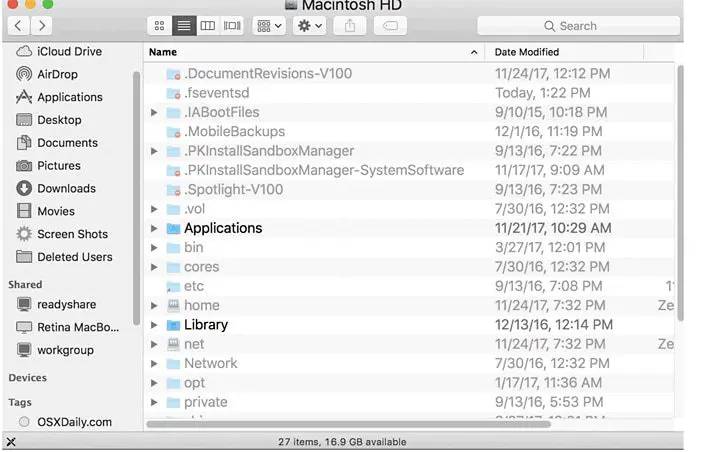words Al Woods
Need to see hidden files and folders on your Mac? Use these ways to track them down using Finder and the Terminal in a few easy steps.
There’re many hidden files and folders under the hood of your Mac, especially if you’ve had it for years. Your operating system keeps them under wraps for a good reason, as you might accidentally cause damage by changing or deleting the critical ones.
You are probably here because you’re hunting the leftover files from your recently removed apps. That’s a smart move – freeing your Mac of the debris of that sort is an excellent way to clear some space on your device and prevent it from lagging. In this article, we’ve pulled together several ways you can uncover the hidden gems on your Mac. However, please be very careful as you access them. Now, let’s dive in!
How to find files and folders using shortcuts in Finder
The quickest way to view your hidden files is by using Finder. You need to pull Finder up from the Dock and find Locations on the side toolbar. After that, double-click on Macintosh HD and then press and hold down the combination of Command + Shift + Period keys. That will show the hidden files and folders. Note that an indicator of a hidden element is a light grey color.
Here’s a quick view of what Macintosh HD looks like after you’ve brought up the hidden files.

image via osxdaily.com
Suppose you want to conceal those files, press and hold down Command + Shift + Period one more time. After you hit that combination, the list will reduce and will only show visible files.
How to access hidden files and folders via the Terminal
As an alternative to Finder, you can try to find all of them using the Mac Terminal, a built-in command interface. This method requires some technical prowess, so you might want to spare the effort if you’re unfamiliar with it. But if you’re handy with the Terminal, you’ll find this way faster. Follow these steps to view your hidden files and folders with the Terminal.
Step 1. Open the Terminal from Dock, launchpad, or Finder. If you’re using Finder, click Go, then Utilities, and double-click on Terminal. Another way is to search it in the Spotlight search field that you can open by pressing Command + Space. Type up Terminal and double-click it.
Step 2. At this step, you’ll be communicating with the Terminal using particular commands. So, to bring on your hidden files, type up the following command into the Terminal: “defaults write com.apple.Finder AppleShowAllFiles true”. Then, hit Return. After that, type in “killall Finder” followed by pressing the Enter key.
Step 3. View your hidden files and folders in the Finder. As you already know, they have a subtle grey hue.
Step 4. Conceal the uncovered files and folders. If you want to revert and make the files hidden again, you should swap “true” to “false” in this command: “defaults write com.apple.Finder AppleShowAllFiles true”.
You may also want to put some files and folders out of sight. You can use the Terminal for that as well. Enter “chflags hidden” and press the Space key. Then, drag and drop the files you want to hide to the Terminal and press Return. That’s all! You’ve hidden the files and protected them from accidental removal.

Why is it best to keep the system files hidden?
Most hidden files and folders are responsible for your software’s proper functioning. You can keep those visible as long as you’re sure it won’t accidentally create any problem. Still, if you’re not a professional Mac user, it’s best to keep those files undercover to avoid system damage. Importantly, after you’ve accessed your hidden files, try to keep them intact, especially without knowing how it might affect your system.




